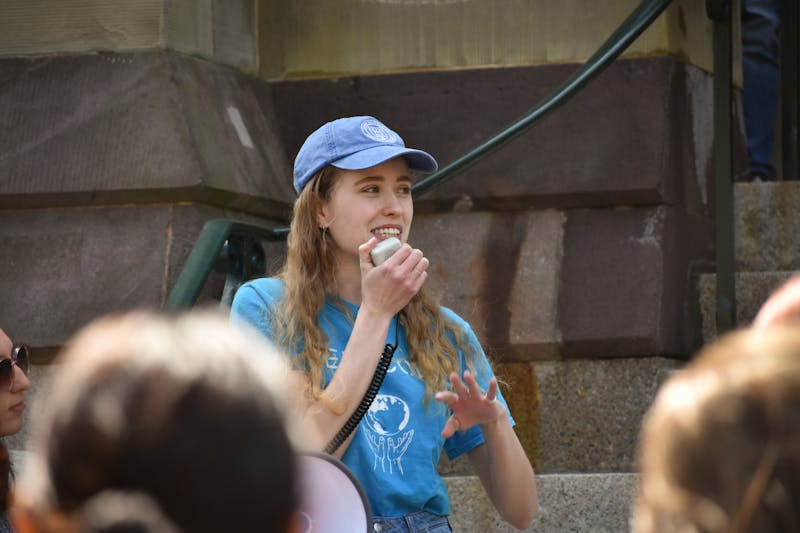After four years of waiting, Penn Health System researchers are finally moving into the new $148 million Biomedical Research Building 2/3, which administrators say will put the University's medical research facilities on par with other top institutions. At 384,000 square feet, the new building -- completed last month and scheduled for a May 13 dedication ceremony -- will house many of Penn's top medical research institutes, like the Abramson Family Cancer Institute and the Institute for Human Gene Therapy. The building, which was completed on schedule and $1 million under budget, represents the completion of the first part of the Health System's 1991 facilities upgrade plan and will provide new labs and workspace for scientists. According to Medical School Senior Vice Dean Richard Tannen, a major objective for the new building is to help attract high quality researchers to Penn. "Certainly the biggest impact is allowing us to recruit and retain stellar faculty by providing the additional research space that we need," Tannen said. BRB 2/3 will open behind the Quadrangle next to the Stellar-Chance Building, which opened in 1995 and was originally called BRB 1. Construction of the second building was delayed by city zoning problems. The name of the new building will likely change, too, officials said, once they can decide for whom to name it. The researchers housed in the building will work primarily in the fields of the biology of cancer, gene therapy and reproductive biology. Having the different disciplines in one location will "tie them all together in a way that we really haven't been able to do in some of our other research buildings," said Steven Wiesenthal, the Health System's associate vice president for architecture and facilities management. As an example of this cooperation between programs, Tannen explained that the Institute for Human Gene Therapy would be located on the same floors as the Abramson Family Cancer Institute. Researchers working on gene therapy treatments for cancer would then be able to take advantage of the knowledge and facilities of both institutions. Other important programs moving to BRB 2/3 include the Developmental Biology Program, the Center for Research on Reproduction and Women's Health and the Center for Experimental Therapeutics. And by moving these facilities into the new building, other departments will finally have room to expand or locate all of their offices in a central location. In addition to providing more research workspace, the building will be the home of a medical bookstore -- run by Barnes & Noble University Bookstores, Inc. -- and a cafe operated by Au Bon Pain. It will also have a large auditorium, seminar rooms and a faculty lounge. "It's been designed not just to provide additional research laboratory space but also to become the new hub of activity for the medical center campus," Wiesenthal said. Ralph Johnson of Perkins and Will, which won the National American Institute of Architects Firm of the Year award, was the lead designer for the building. "The architecture is designed to reflect both the traditional architecture of the brick and limestone campus but also? reflect the technology of the 21st century and the height and scale of a newer, larger research building," Wiesenthal said. The May 13 dedication is scheduled to be attended by University President Judith Rodin, Health System Chief Executive Officer and Medical School Dean William Kelley and Abramson Institute Director Craig Thompson.
The Daily Pennsylvanian is an independent, student-run newspaper. Please consider making a donation to support the coverage that shapes the University. Your generosity ensures a future of strong journalism at Penn.
DonatePlease note All comments are eligible for publication in The Daily Pennsylvanian.







